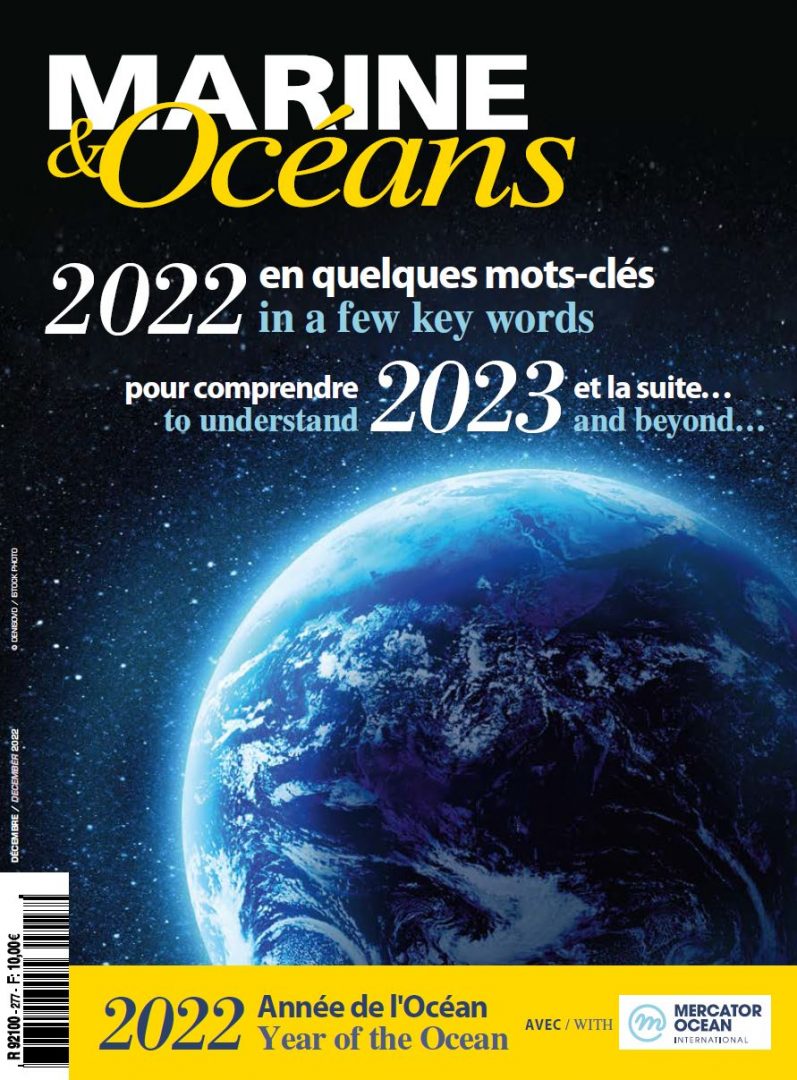By Ralph Chami, Dinah Nieburg, Thomas Cosimano & Connel Fullenkamp
—
Humanity stands at a crossroad, faced with the dual threats of climate change and species-biodiversity loss. The very foundation upon which our lives depend is at risk, yet our actions – our lifestyles and economic activities – do not yet align with this stark and quickly approaching calamity. COVID-19 exposed what scientists have been saying for many decades – that humanity’s economic and social wellbeing are inextricably bound to nature.
The action that needs to be taken is clear: we need to urgently mitigate both risks, at the same time, and quickly. The question, however, is this possible? And, if so, how can we accomplish it?
The answer to the first question is yes, because the two risks are related. This crisis can have a happy ending if we are able to harness the power of a healthy and living nature to mitigate climate change. Armed with this knowledge, we can then develop a new financial and economic framework that can protect and regenerate our natural world while reducing climate change risk at the same time. And best of all, this new paradigm will also deliver sustainable and shared prosperity. There is a path to a sustainable future for people and the planet, which must begin with a shift in our economic thinking and our behavior.
A CURRENT UNSUSTAINABLE ECONOMIC MODEL
Our current economic paradigm operates under a premise that nature is limitless, and that economic wealth and human well-being can grow irrespective of the impact of our actions on the natural world. With nature treated as “external” to economic life, we have created a degenerative circular economy that extracts and pollutes with no boundaries.
This has resulted in the loss of both biodiversity and ecosystem services we rely on such as pollination, soil regeneration, air and water purification, and ultimately has caused the climate change risk we all are now facing. One global sustainability metric indicates that our current way of life requires the resources of close to two earths[1].
That is, we are borrowing from future generations and from those with no voice, simply to maintain our lifestyle. Clearly, this pursuit of growth at all costs to humanity and to nature is not sustainable. We need to change our behavior and that includes rectifying our relationship with the natural world. We need a plan of action that shifts our economic life from a degenerative economy to a regenerative one.
ACHIEVING CARBON NEUTRALITY BY 2050
The 2015 Paris Accord did not produce a plan of action, but it did generate commitments by countries and by the corporate sector to achieve carbon neutrality by 2050. Global efforts to reduce CO2 emissions have been lagging in relation to the accelerated risk from climate. And the Paris Accord was not aiming to protect nature or reduce the pace of extinction and biodiversity loss. Only this year for the first time have the scientific bodies from the Paris Accord and the Convention on Biodiversity come together to issue a joint report. It is astounding to think that one could separate a climate problem from nature – the very system that regulates the climate.
But the Paris Accord has created leverage for action. With the deadline of 2050 quickly approaching, there is an insatiable demand for CO2 reduction and sequestration coming from private and public sectors, while both stakeholders transition to a carbon free and carbon negative world. Recent reports clearly indicate that the world is already facing significant climate change eff ects, and due to our lack of collaborative action, the world no longer has 30 years to adapt. We must reduce carbon emissions by at least half in the next 10 years to stand a chance of remaining inside the 1.5 C rise. A recent report by Mark Carney, former head of the Bank of England, estimates that net CO2 emissions must be reduced by 23 billion metric tonnes per year before 2030 and by 41 billion tonnes before 2050. Do we have technology to meet the insatiable demand for carbon reduction and sequestration?
THE FANTASTIC POWER OF NATURE TO CAPTURE CARBON
The two crises present a unique opportunity for us to rebalance our relationship with nature. According to IUCN2, the supply of carbon off setting services provided by nature alone is currently estimated to satisfy over 37% of the demand identified by the Paris Accord commitments (25% is due to ocean alone). That is approximately 24 billion metric tonnes per year and has the potential to be much higher. The source of this knowledge is science and some of that evidence is quite recent. With advances in science and technology, we are learning more and more about the value of nature to our health and to our economic well-being.
Science has revealed the power of nature to capture carbon – not only in trees and terrestrial habitats, but also in the ocean and coastal areas; and through the interaction of animal species with their habitats and each other. It is only with all the biodiversity of plants and animals and micro-organisms that nature can deliver carbon sequestration and the many other ecosystem services we desperately need more of.
For example, the ocean, comprising 70% of the earth’s surface, is one of the greatest carbon sinks on earth. Recent work reported in the 2019 IPCC report estimates the open ocean to have stored 440 Gt of carbon since 1830. Scientists have known that carbon stored in water greater than 200 meters ensures the carbon will be sequestered for more than 500 years, and for millennia if the carbon sinks deeper to the seabed. Carbon is transported through a complex interaction of biological and chemical processes, with all sea creatures large and small, interacting in a complex choreography of the food web chain. Each part and especially the large vertebrates, predators and mammals, play an outsized role.
Science also tells us that the great whales help capture carbon through their fertilization of phytoplankton. The latter is thought to be responsible for capturing over 30% of CO2 due to human activity. A single whale can also sequester over 33 tons of CO2 in carbon in its body. Thus, one great whale helps to capture carbon equivalent to thousands of trees.
Coastal marine plants and organisms – such as saltmarshes, mangroves, and seagrass – known as “blue carbon” – also capture and sequester significant amounts of CO2 and provide natural defense against floods. For example, each km2 of seagrass is estimated to enhance CO2 capture by 15,000 metric tons over the course of 50 years. Today’s seagrass beds, unfortunately, are estimated to cover less than 15% of their former range in the early 1900s.
In addition to trees’ CO2 sequestration, recent scientific evidence reveals that forest elephants in Africa increase carbon sequestration in trees by 7%, and that a single forest elephant can also capture over 9500 tons of CO2 by increasing above-ground biomass in the forest. Furthermore, forests that have lost their elephants are poor sequesters of carbon, according to the new science.
Yet, this realization of the power of nature to capture carbon and provide essential ecosystem services is not enough to change human and economic behavior. Nature and animal species continue to be at risk from various human activities, such as overfishing, sonar testing, ghost nets, commercial fishing, ship strikes, deep sea mining, and on land from poaching and loss of habitat. How is it that all these invaluable natural services to humanity are not recognized by society?
GIVING VALUE TO THE REGENERATIVE NATURE
For these benefits to be visible to policymakers, consumers, and private sector, the scientific knowledge about these benefits needs to be translated to monetary language that these various stakeholders can understand, appreciate better the value of a living nature, and take action to provide much needed funding for the conservation of nature. The implication of this is not a trivial matter, as it means that we must shift our behavior and our economies from an extractive view of nature to one that values a regenerative nature.
With the price of carbon on the European Trading System continuously rising and expected to continue to do so due to the pressing demand for carbon reduction and sequestration by sovereigns and the private sector, we can now value the carbon sequestration services of nature.
For example, recent work by Chami and his colleagues shows that the biological carbon pump provided by the deep ocean is worth more than $2 trillion. Chilean blue whales’ ecosystem services including carbon sequestration are valued at over $4 million per whale. If seagrass meadows were restored to their global historical levels, the value of their carbon sequestration service alone could easily be worth over $2 trillion. On land, this work shows that a forest elephant carbon sequestration service is worth over $1.75 million per elephant. With new science revealing more secrets about the pivotal role that living nature plays in enhancing our health and our economic systems, we can now translate all these benefits into monetary terms.
The monetary valuation of nature’s benefits allows for cost-benefit analysis when considering funding of the protection and regeneration of nature by other stakeholders who are not necessarily philanthropically motivated. It has the potential to galvanize and unleash the enormous resources of the markets around the services of nature. The monetary value
assigned to ecosystem services of nature, such as carbon sequestration, converts the natural resources to a new class of assets as they are potentially a new source of revenue. But what else is needed to unleash this potential source of wealth?
THE NEED OF A POLICY ACTION
It is well understood that policy action is needed to protect and regenerate our natural world. There are many examples of global agreements, conventions, commitments as well as country-level efforts to help protect nature. In some cases, global coordination is warranted as in the case of open and deep ocean or in the case of the great whales. The open ocean and it is carbon sequestration service (among other services) is a global public and common good, thus a multilateral approach is needed to ensure that economic activity does not degrade this vital service. The same logic applies to whales, who, due to their global migratory behavior, are also a global public good. Support for the science is also warranted so that it continues to reveal to us the additional benefits that these global public goods provide to all humanity. Policy can ensure that the open and deep ocean, and creatures in it like whales, continue to mitigate the climate change repercussions already underway. If we lose ocean life we lose not only the fight against climate change, but we also put humanity at risk.
Despite valiant policy actions such as Marine Protection Areas (MPAs) and other declarations of ocean sanctity, life in the ocean continues to suffer from ship strikes, seismic and sonar testing that severely impairs the hearing of whales, plastic pollution that poisons marine life, deep-sea mining that destroys ocean beds, and other human activities that view nature from an extractive lens. It is clear that statements of intentions are not enough to change our attitude to one that values the regenerative role of a living ocean. What else is needed?
Using the monetary valuation of the benefits of ecosystem services offered by nature provides policymakers with a powerful tool for changing behavior towards nature. Combining monetary fines with policy action regarding the sanctity of nature signals serious commitment on the part of the authorities to safeguarding the health of their natural resources. Monitoring and exacting fines when harm is inflicted to the natural assets would send a clear signal to market participants that a living nature has value. Recognizing that the natural resource is a natural asset brings even better news.
SERVING LOCAL AND INDIGENOUS COMMUNITIES
The looming twin risks that humanity is facing can be mitigated and there’s an urgent need to do so in a short amount of time. The new economic paradigm discussed above recognizes that the sustainability of our economic systems hinges on the sustainability of our ecosystems and biodiversity. The new financial and economic framework envisions the creation of markets around the protection and regeneration of nature, with the flows from the sale of ecosystem services (such as carbon offsets or credits, in this case) going to the stewards of the natural assets that produce these services. These are the local and indigenous communities. With the increase in their permanent income, these communities would now be able to provide for their families and future generations, leading them to recognize that an intact and thriving nature is the source of their newfound wealth.
Focusing on the protection and restoration of nature directly supports several of the 17 sustainable development goals (SDG), including 13 Climate Change, 14 Life Below Water, and 15 Life on Earth. But the paradigm goes much further. This approach links the wellbeing of nature with the wellbeing of communities living alongside nature and whose livelihoods are derived from taking care of our natural world. This new income source reduces poverty (SDG1) and inequality (SDG10) by providing steady income and raises living standards with decent work and local community development (SDG8). A healthy and biodiverse natural environment produces ecosystem services that lead to healthier living (Clean water, SDG6; and Good Health, SDG3). Through this new nature-positive economy, a virtuous partnership between people and nature can be regained.
Developing and low income countries also benefit. By selling ecosystems services of natural assets – but never the assets themselves – countries endowed with this natural capital can diversify their economies away from the typical dependence on the sale of depletable resources, which should help them buff er climate and other adverse shocks. The self-financed natural assets would also obviate the need to rely solely on tourist dollars, while the income and employment generated from the sale of ecosystem services, such as carbon sequestration, would help stabilize communities in their homes, thus reducing the need for these communities to migrate in search of a better future to large cities or abroad. In this case, economic prosperity would be both sustainable and inclusive. Meanwhile, a thriving nature would provide for better health and environment for local communities as well as help fight climate change on behalf of the rest of the world. This new paradigm has the ability to make conservation a source of capital for economic development.
So, what are the actions needed on the level of local governments and the international community to unleash the power and promise of this new paradigm? Below, we lay out the key steps:
- Undertake accounting of the natural asset and biodiversity.
- Value, in monetary terms, the ecosystem services that nature provides to our economies.
- Enact policy to protect the rights of nature, which is needed to turn natural assets into capital.
- Employ verification standards through advanced technology and science to ensure transparent and trusted
verification of the natural asset services. - Safeguard the protection and regeneration of natural assets in perpetuity.
- Ensure local communities benefit in terms of income and employment.
- Ralph Chami, PhD, is a financial economist, professor, and policy expert with 23 years at the IMF leading work on fragile and low income states, providing capacity development, and working on financial market development including markets for natural capital. He is currently on sabbatical from the IMF working full-time on the two risks to humanity – climate change and biodiversity loss. He developed an innovative financial model for valuing natural capital, including for species such as elephants and whales, and a framework for developing the natural capital markets for ecosystem services. He engages with audiences all over the world around a new framework for a nature-based economy.
- Dinah Nieburg, PhD, Co-Founder and COO, Blue Green Future (a division of Blue Green World), is a nature advocate, executive coach and psychologist with 30 years working with leaders in international financial institutions, the UN and NGOs, and 10 years protecting endangered species including elephants and whales. At Blue Green Future she identifies and builds partnerships and alliances with NGOs, academics, scientists, and the private sector around nature-based solutions to climate change and biodiversity conservation.
- Thomas Cosimano, PhD, Co-Founder and CFO, Blue Green Future (a division of Blue Green World), is Professor Emeritus in Finance, University of Notre Dame, with extensive research on how models of the financial markets can be solved using modern computational and mathematical methods. He now heads up the financial valuation
team for natural assets at Blue Green Future and has created valuations for blue carbon natural assets such as global seagrass, and for species such as whales and forest elephants.
- Connel Fullenkamp, PhD, Co-Founder and President, Blue Green Future (a division of Blue Green World), is a Professor of Economics and Finance, Policy Expert and Teacher with expertise in financial market development and regulation. A main focus is creating markets for natural capital. He is a lead author and advisor for policy work on natural capital and innovative financial instruments needed to bring significant investments into climate mitigation and nature conservation.


